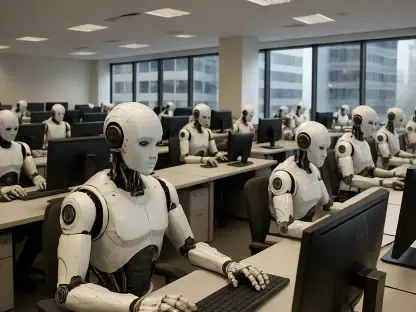I’m thrilled to sit down with Sofia Khaira, a renowned specialist in diversity, equity, and inclusion, who has dedicated her career to transforming talent management and development practices. With her deep expertise in HR, Sofia has been at the forefront of creating inclusive and equitable workplaces, especially as technology like artificial intelligence reshapes the landscape of workforce planning. In this conversation, we dive into how AI is changing the way companies strategize their talent needs, the importance of balancing automation with human potential, and the critical role of culture and skills in an evolving work environment.
How has AI transformed the traditional approach to workforce planning in organizations?
AI has fundamentally shifted workforce planning from a simple headcount exercise to a more nuanced, task-oriented strategy. In the past, we focused on filling roles based on budgets and goals, but now it’s about dissecting work into specific tasks and deciding what humans should handle versus what can be automated. This allows companies to maximize efficiency while still leveraging human creativity and insight for higher-value contributions. It’s a game-changer because it forces us to rethink not just who we hire, but how work itself is structured.
What does moving to a task-based planning model mean for HR professionals and their day-to-day work?
For HR, task-based planning means getting granular—breaking down jobs into individual components to see what can be automated and what requires a human touch. It’s about redesigning roles so that employees focus on things like problem-solving or collaboration, while AI takes over repetitive tasks. This shift requires HR to be more strategic, working closely with other departments to understand workflows and ensure roles evolve in a way that complements technology. It’s a challenging but exciting pivot that can unlock a lot of potential if done thoughtfully.
What are some of the risks you’ve seen when companies adopt AI too quickly in their workforce strategies?
One major risk is overconfidence in AI’s capabilities, leading to rushed decisions like cutting jobs or scaling back hiring without solid evidence that technology can fully replace human input. I’ve seen organizations jump on the AI bandwagon to seem innovative, only to find that tools don’t deliver as promised—like coding software that produces flawed outputs requiring more human cleanup than expected. This trend-chasing can erode trust and disrupt long-term planning if HR isn’t grounding decisions in real data and outcomes.
Why do you think junior roles remain essential even as AI takes on more tasks?
Junior roles are the foundation of a company’s talent pipeline. If we eliminate them in favor of AI for short-term efficiency, we risk losing the next generation of leaders who gain critical experience and institutional knowledge through those early positions. AI can’t replicate the learning that happens on the job or the relationships built over time. HR needs to protect these roles as a way to nurture future talent, ensuring we don’t create a gap that leaves us vulnerable down the line.
How can data play a role in helping leaders plan for an uncertain future with AI in the mix?
Data is a lifeline in navigating uncertainty. Leaders should be looking at metrics like productivity changes, task automation rates, and employee skill gaps to understand how AI impacts their workforce needs. Scenario planning is also key—using data to model different futures and prepare for shifts. For example, if a new AI tool emerges, how might it affect certain roles? By running these simulations, HR can stay agile and adapt strategies proactively rather than reactively, which is crucial in a fast-moving tech landscape.
What skills do you believe employees need to thrive alongside AI in today’s workplace?
Employees need a mix of technical and soft skills to succeed with AI. On the technical side, basic AI literacy—understanding how to interact with tools and interpret outputs—is becoming essential across roles. But equally important are softer skills like critical thinking, adaptability, and teamwork. These human strengths complement AI by allowing employees to question results, innovate, and collaborate effectively. Companies should invest in training and mentorship to build both skill sets, creating a workforce that’s ready for anything.
How does the integration of AI affect workplace culture, particularly in remote or hybrid environments?
AI can create distance if not managed carefully, especially in remote or hybrid setups where spontaneous interactions are already limited. Tools might streamline work but can reduce the human connection that builds trust and engagement. I’ve noticed challenges like employees feeling isolated or disconnected when communication is overly tech-driven. HR needs to prioritize culture by fostering intentional interactions—think virtual team-building activities or low-stakes games that create shared experiences. These moments help maintain a sense of community despite physical or technological barriers.
What role does transparency play when introducing AI tools into workforce planning and employee roles?
Transparency is everything when rolling out AI. Employees need to understand why these tools are being introduced, how they’ll impact their work, and what support is available to adapt. Without clear communication, there’s a risk of fear or mistrust—people might worry their jobs are at stake. By being open about AI’s limitations and emphasizing that it’s about augmentation, not replacement, HR can build confidence. It’s also about involving employees in the process, so they feel like partners in this transformation rather than subjects of it.
What is your forecast for the future of workforce planning as AI continues to evolve?
I believe workforce planning will become even more dynamic and human-centric as AI evolves. We’ll see a deeper focus on integrating technology with human potential—think personalized upskilling paths powered by AI insights, or hybrid roles that blend automation with creativity. The challenge will be maintaining equity and inclusion in these strategies, ensuring no one gets left behind. Companies that succeed will be those that treat AI as a tool to empower their people, not just cut costs, while continuously adapting to new possibilities with a clear ethical framework.









